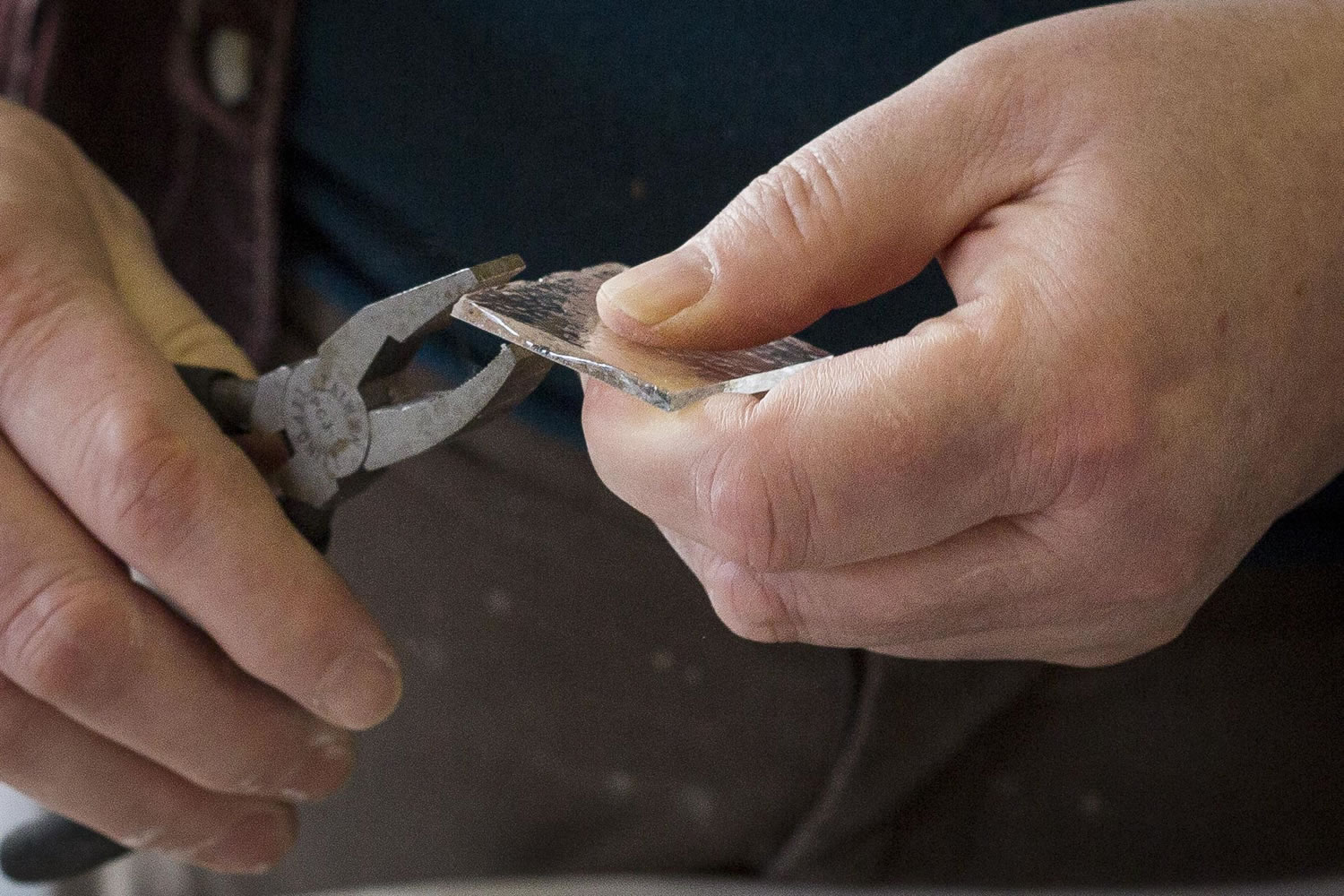ASTORIA, Ore. — Glass artist Jamie Boyd was walking through downtown years back when she looked toward her feet, noticed the vacant square gouged in one of the grids holding Astoria’s purple glass sidewalk tiles, and proclaimed: “I can fill that hole.”
The moment led Boyd, who runs Studio 11 beneath the Elks Lodge, into the niche operation of replacing the historic tiles for property owners and the Astoria Downtown Historic District Association.
Boyd fuses about nine layers of glass in a ceramic alumina-silica form at more than 1,400 degrees for nine hours. The tip of each tile is topped by a purple plate to replicate the coloring in the old tiles. The original tiles were clear, but iron and magnesium molecules used historically in the glass-making process tinted them purple.
The tiles, which run $15 apiece, come out like cuboid, 3-D Tetris pieces ready to fit into the cement grates downtown with mortar.
Boyd said she first started replacing the tiles two years ago in front of the Carruthers Building and has so far done about 40 outside Carruthers, RiverSea Gallery and Old Town Framing Co.
Ray Merritt, the chairman of the downtown association’s design committee, said the group recently put aside $1,000 to replace tiles downtown but is still figuring out how to split the costs of replacement with property owners. The other problem is hit-and-miss participation, he said, with some property owners opting to cement over missing glass tiles or replace the entire grate.
Fireproof lighting
The tiles often look like decorations to passers-by, but were installed after Astoria’s last great fire in 1922 to diffuse light into the basements below the street. The use of vault lights dates back to the mid-19th century, when they were used to light the hulls of ships, where open flames could be disastrous. The idea of fireproof basement lighting caught on in cities but went out of style as electric lights became more commonplace.
Vault lights can still be found in cities such as Portland, Seattle, San Francisco, Deadwood and in Victoria and Vancouver, B.C.
Many of the grids have been replaced, and many tile slots have been filled with cement or wood. But Astoria still has more than 45 grids filled with up to 100 tiles apiece, mostly on Commercial and Duane streets.
Sidewalk politics
Boyd said she has been limited in her creativity by a city ordinance requiring replacement tiles to be historically accurate. Jeff Daly, a native Astorian, photographer, filmmaker and local organizer, said the ordinance was created in response to a plan he had about four years ago to replace the tiles for free and light up city streets.
Daly said he had gathered a group of high school students and took a census of the state of vault lights in Astoria. The plan, he said, was to place a layer of Lexan polycarbonate plastic in the holes of missing tiles. The remaining space would then be filled with leftover glass “teardrops” from Fernhill Glass Studios and donated resin from Englund Marine & Industrial Supply to create a smooth transition with the sidewalk.
Daly, who has worked on underground lighting at the Hotel Elliott, said he imagined underground lights coming out of the sidewalks through the fog at night. “It would look so awesome, the lit street of Astoria,” he said.




